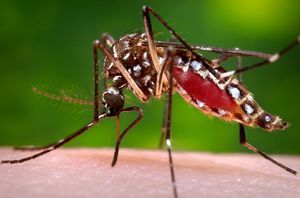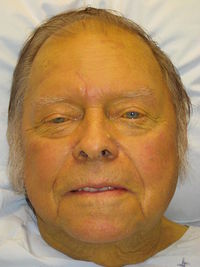Yellow Fever Vaccine
From MicrobeWiki, the student-edited microbiology resource
By Christopher Kei Helm
Overview
History
Virus
Replication

Figure 4. Diagram of the Flavivirus' life cycle. Notice the initial binding to the host cell and the clathrin mediated endocytosis that follows the initial binding. Then the viral membrane fuses with the host's endosome to expose the viral ssRNA to the endoplasmic reticulum (ER). There, the ssRNA is transcribed and copied to make new viral proteins and new ssRNA. The viral particles are assembled and form a immature virion by budding off of the ER. After budding off, the immature virion moves to the Golgi. Moving from the Golgi to the host's membrane, the cell undergoes cleavages that cleave the prM protein into M proteins, maturing the virion before being secreted out of the host cell. Additionally, notice how the immature virion has a rough, spiked surface in contrast to the smooth surface of the mature virion. Diagram by Ted C. Pierson, NIH National Institute of Allergy and Infectious Diseases
Symptoms
Treatment and Cure
Mechanism of Infection
Vaccine
Future Research
Chimera Vaccines
Climate Change and Yellow Fever
Availability of Yellow Fever 17D Vaccine





